REVIEW
NUS Cities Symposium 2023: Key takeaways
The NUS Cities Symposium “The Science of Cities” (31 August-1 September 2023) was part of NUS Sustainability CONNECT, NUS’ inaugural annual sustainability month. The Symposium is a forum for participants from academia, public agencies, NGOs, the industry, and students to share knowledge and exchange ideas on how to make cities liveable, sustainable, and resilient, and in developing a more science-based approach. Here are four key takeaways from the discussions.
Sustainability: From both sides of the classroom
The NUS Cities Symposium brought together voices from both sides of the classroom, on planetary crises such as climate change, and the role of Institutes of Higher Learning such as NUS to help. Both the university leadership and students agree that NUS should foster sustainable development by employing an interdisciplinary, systems-based approach to urban education and research. Given the uncertainty and complexity of urban issues, integrating diverse disciplines is unanimously deemed essential.
The university is a “living lab” to test innovative ideas needed to combat future issues, known or unknown. Whether by pushing the boundaries of sustainable design through campus infrastructure, educating a climate-conscious talent pipeline, or encouraging cross-collaboration between academics, practitioners, and policymakers to shape regulations, universities play fundamental roles in the global sustainability challenge.
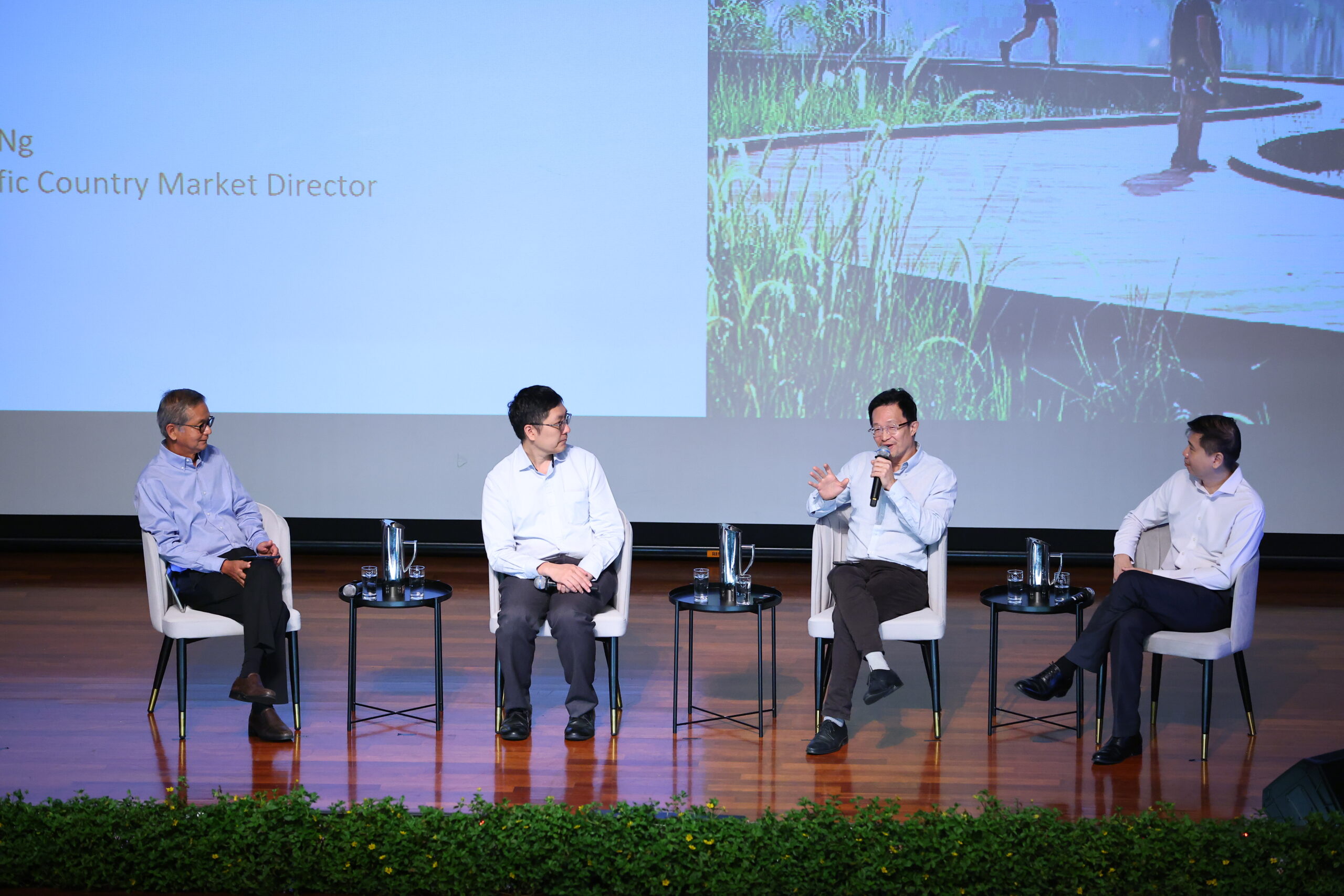
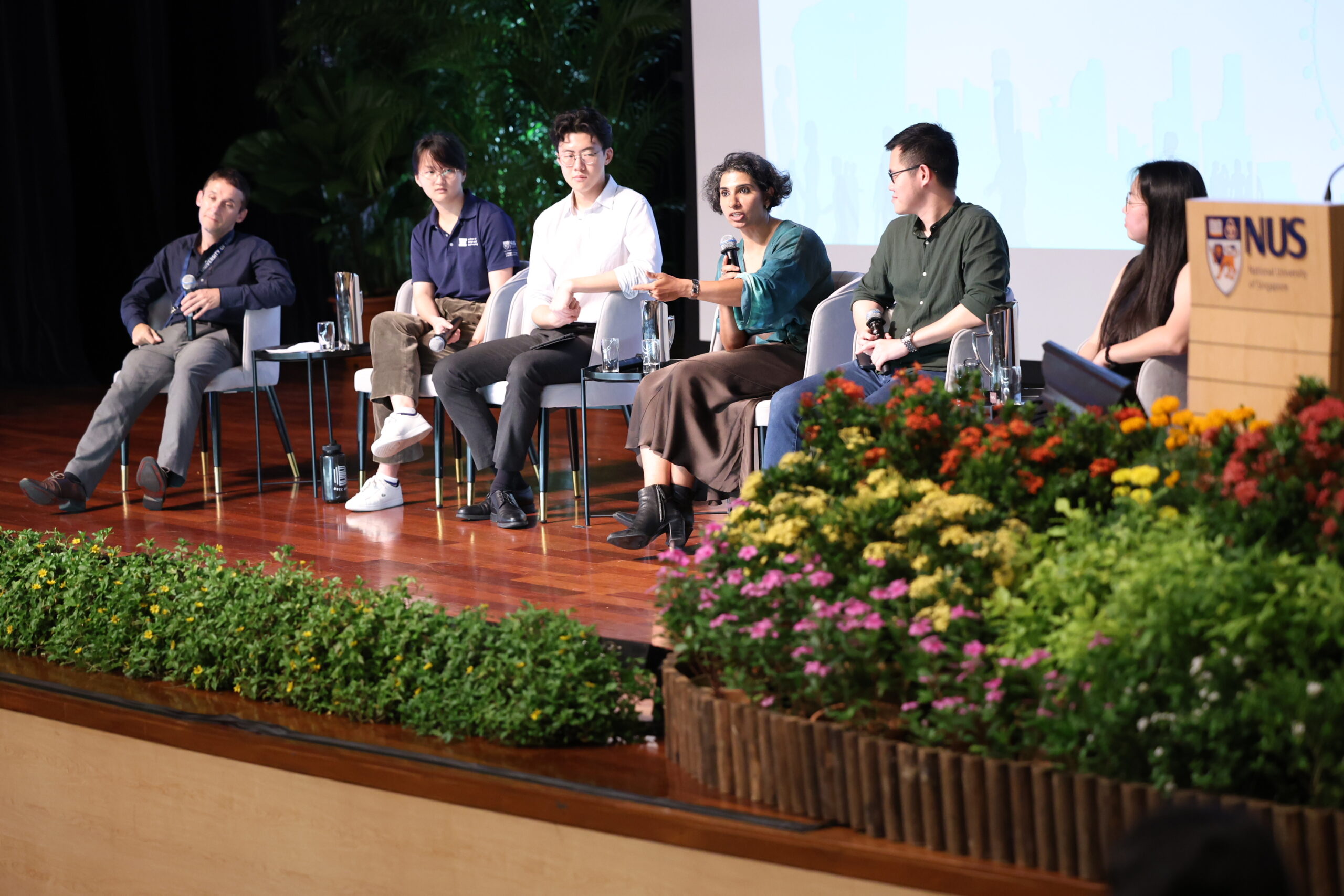
Aside from this broad consensus on how universities can help, there is a clear divergence in the stance and attitudes to climate change. While some among the university leadership are amazed by the younger generation’s vocal commitment to abating climate change, students shared their deeper anxieties. Students call for systemic changes, minimisation of consumption, careful filtering of greenwashing and buzzwords, and the need to emulate countries such as Denmark. They are hesitant when asked if they are optimistic about humanity’s ability to accelerate sustainable development to match the speed of urbanisation.
By 2030, even as more countries join the ranks of the “super-aged”, for the whole planet, an estimated 60 per cent of the urban population will be under the age of 18. Cities will be inhabited mostly by this demographic, who have little political or economic power, but are completely aware of their vulnerability to increasingly extreme symptoms of climate change. This is exacerbated in a time of precarity—with distrust and misinformation, disaster and conflict, and inequality and disengagement on the rise. The result of this confluence of factors? Young people are inheriting a weight on their shoulders, seemingly growing more massive by the day.
“A City in Nature”, with ideas from the past?
The challenge in realising the vision of “a city in nature” in Singapore encompasses several issues, including space constraints, human-wildlife conflicts, and the need for coordinated efforts at societal and community levels. Unlike countries with extensive hinterlands, urban city-states like Singapore need to invest in the research and development of technological innovations, particularly in energy, water, and food production. Concurrently, grassroots initiatives, such as reducing household wastage, can contribute to broader cultural, behavioural, and mindset shifts.
The Symposium’s discussions delve into topics such as the potential and limitations of green and blue carbon financing for protecting tropical forest ecosystems; socio-economic constraints on reforestation in Southeast Asia; the role of designers in maximising land potential through the creation of denser, multi-tiered forestry; and the multifunctional use of under-used spaces for urban farming, solar generation, and green roofs.
The importance of conserving nature and biodiversity in socially responsible and economically viable ways is consistently emphasised, with a focus on developing research and technology. The concept of a climate-resilient Singapore was explored, particularly concerning rising urban temperatures, and the need for systematic monitoring, tracking, and adaptation measures.
From the audience, there are calls to examine both traditional, self-sufficient villages, and nature itself, scaling and applying ancient models to the modern city. This prompts the seemingly paradoxical idea that, in predicting the future of cities, we must look to the past. This begs deep thinking regarding a complicated question: How to apply traditional knowledge and wisdom accumulated and perfected over millennia to cities facing unknown, overlapping challenges?
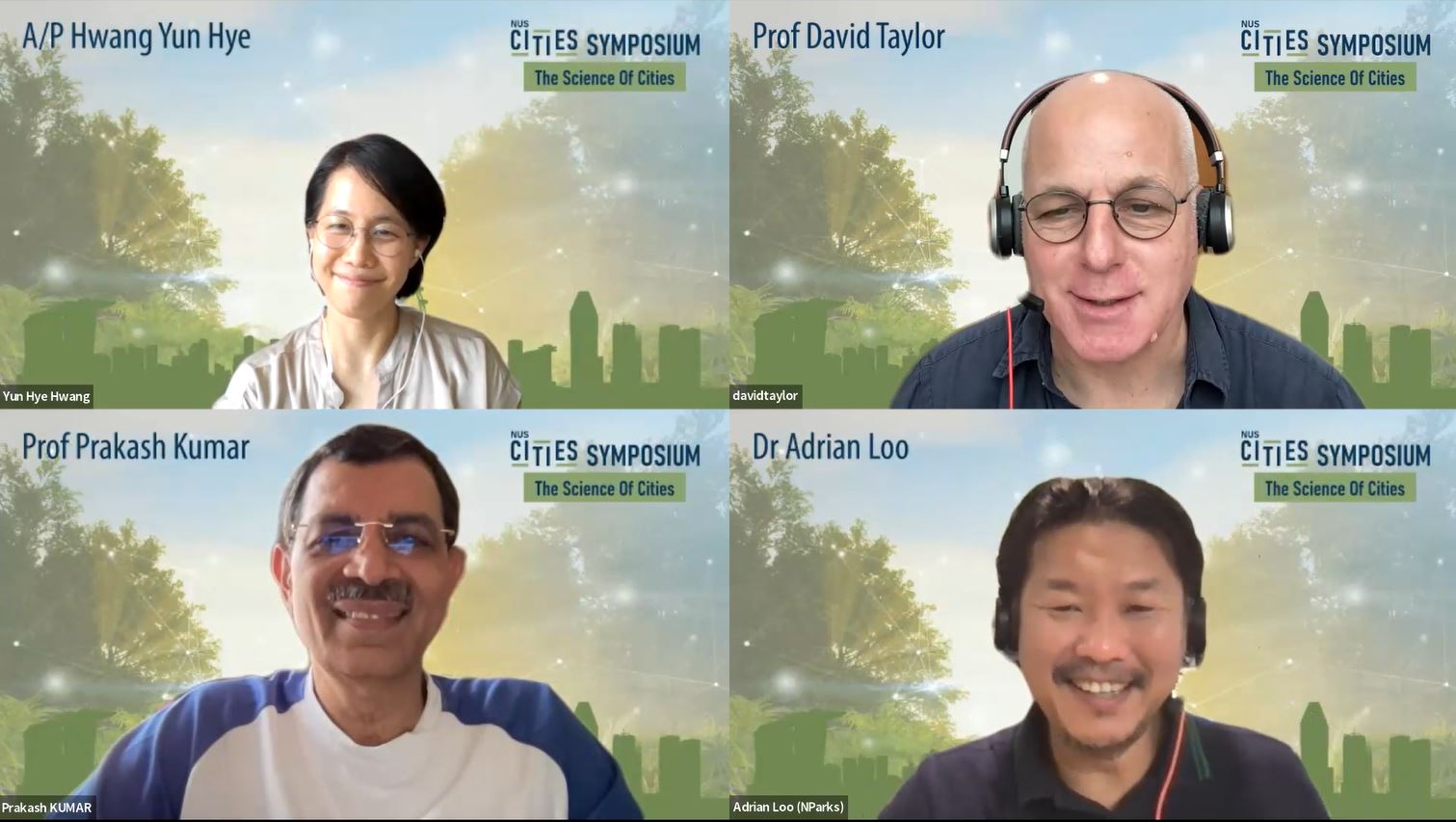

Are cities too complex to predict?
Cities are not just hubs of human activity, but complex adaptive systems with non-linear and emergent properties. Understanding the vulnerability and capacity for resilience of cities to shocks and stresses, complexity and system science offers the potential for adaptive planning and governance. Institutions like NUS – with cutting-edge research facilities, multivariate approaches and curricula, and strong connections to government and industry – serve as catalysts for advancing the science of cities. Challenges in translating complexity science to policymakers include bridging complexity and simplicity, addressing heterogeneity, and demonstrating the value of simplified models, even if they do not address near-term and localised problems as well.
Urbanists such as Jane Jacobs argue that modernist ideas emphasising order and efficiency have eroded the intimate complexity of cities and neighbourhoods. The emergent phenomena from interconnected diversity and life within the built form results in the city becoming greater than the sum of its parts. Even so, the application of complexity in designing city subsystems remains largely unexplored. The influence of complexity on city planning is contemplated, with discussions touching on the fast-paced emergence of diversity derived from innovation, and the need for research on understanding complexity through models and technology.
While some panellists urge that research and technology be leveraged to enhance Singapore’s preparedness and resilience in the face of future challenges, others contemplated whether the collective knowledge base of humanity is sufficient to predict increasingly unprecedented futures. The debate arises regarding the predictability of cities, with some arguing for general laws governing predictability, while others contend that cities are ultimately unpredictable, challenging the transferability of models from one city to another.
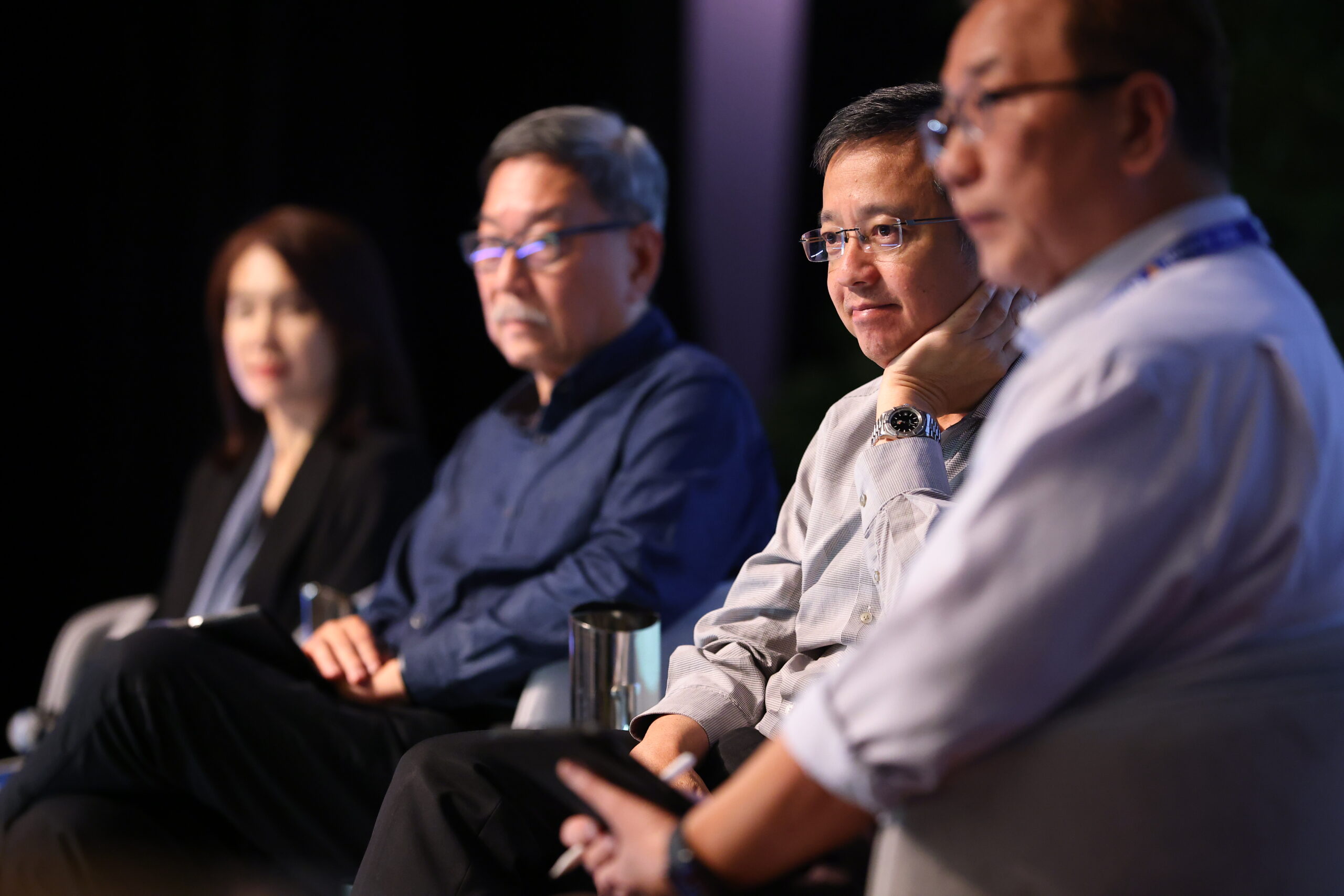
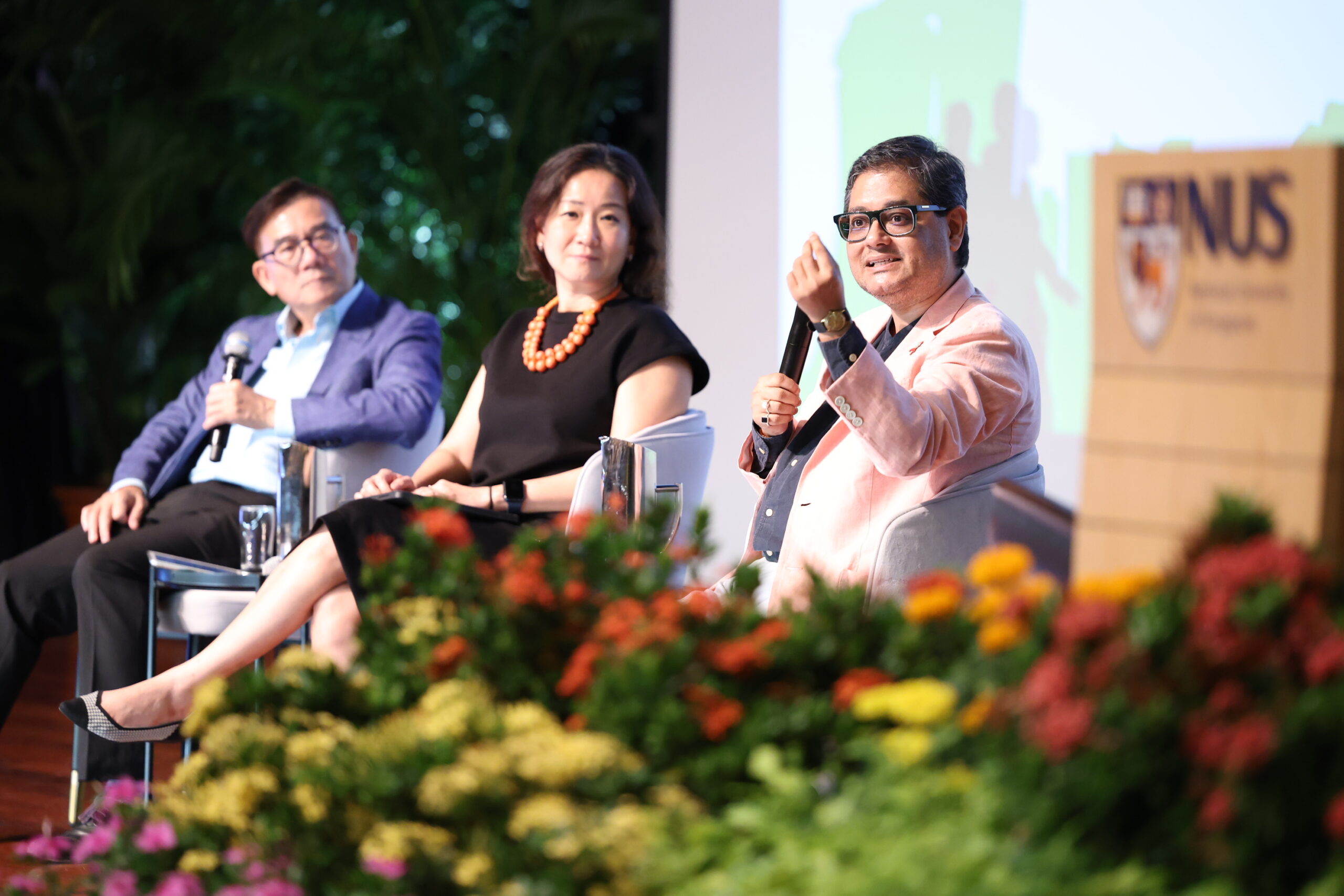
The science and art of cities
In the context of social management in cities, there are certain principles to follow to manage teams, societies, and communities. However, policy needs to be embedded within a wider, softer suite of solutions to address social issues. Managing interpersonal relationships and social cohesion is an art, necessitating bottom-up solutions, and a nuanced approach to addressing nebulous problems.
There are unique challenges to building social cohesion and resilience in Singapore’s multi-ethnic context. Shared perspectives and experiences are deemed crucial in building social capital, and there is a recognition of the growing diversity and need for community initiatives to be contextually adapted. The example of community gardens is cited as a potential exercise for fostering community bonds, although challenges such as ownership issues are acknowledged. The impact of community context on the success of initiatives is emphasised, noting that different neighbourhoods require tailored approaches, and the scaling and sustaining of projects require systematic approaches.
The collective effort required to co-create inclusive housing environments for all is an important area of focus. Ongoing research is cited that aims to enhance interpersonal and collaborative relationships between residents independently, questioning the necessity of society’s immediate reliance on the authorities.
Social archetypes and patterns in society are expected to evolve, which prompts reflection on Singapore’s historical diversity and the continuous need for inclusivity. Diverse, local communities can be empowered through conservation and education efforts. This discussion prompts concerns surrounding financial sustainability and the potential displacement of local craftsmen and businesses due to market-driven rents. This may affect long-term plans to improve the competencies in craftsmanship required to preserve heritage buildings.
Discussions range from the role of diversity in promoting innovation, empowerment of local communities through conservation, and promotion of values such as social cohesion in schooling, to the need to foster a collaborative culture between citizens and the authorities. Ultimately, a recurring emphasis is placed on citizen inclusion in decision-making processes, and the need for grassroots, bottom-up approaches to address complex problems.

